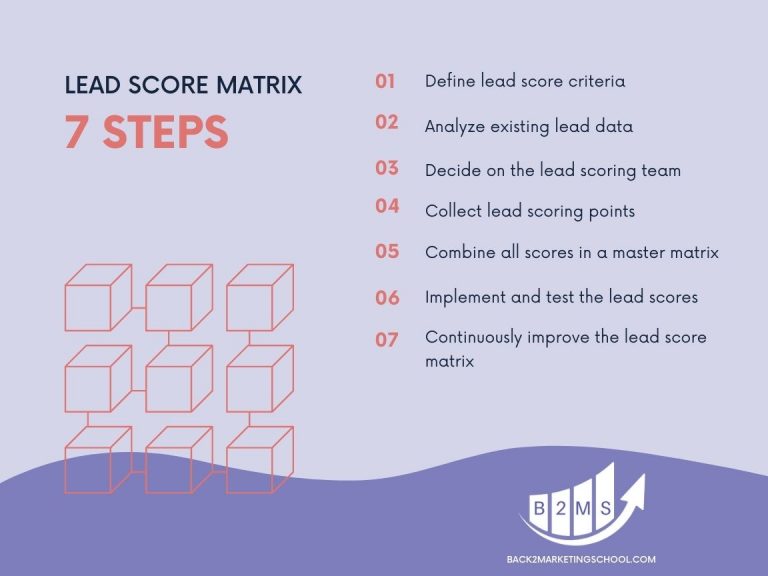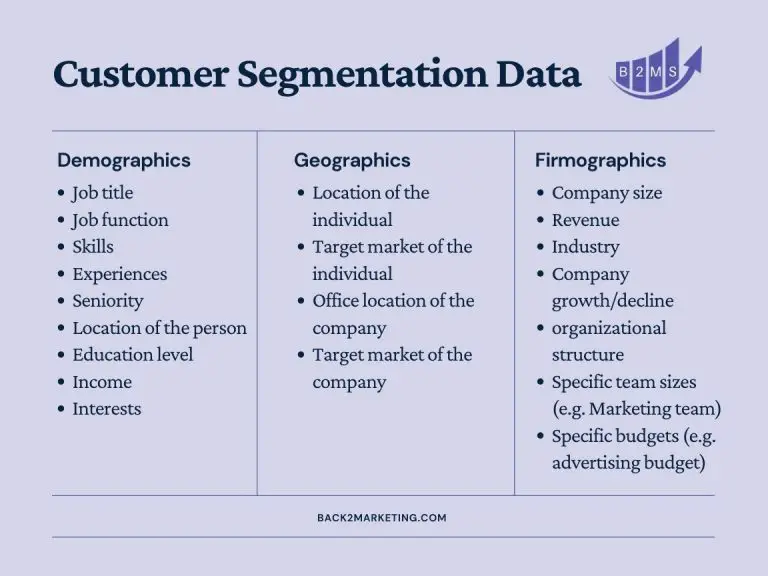How to use a Lead Score Matrix
What is a lead score matrix?
The lead score matrix is a tool to determine your lead scoring model. As part of your marketing strategy, the scoring matrix lists all criteria and assigns points to determine the lead quality in real-time.

The lead score matrix is a great collaboration tool between sales and marketing teams to define the best possible lead qualification. The goal is to qualify leads before they get phone calls from the sales team. Only sales-ready leads will be handed over.
Every stakeholder involved in the process assigns a score to positive and negative criteria with the goal to define and align on final lead scores.
See the table below as an example:
CMO | VP Sales | SDR Manager | |
Company size | 8 | 9 | 7 |
Industry | 9 | 9 | 9 |
Subcategories of the lead score matrix
In most cases, it’s not enough to only have one criteria. For example, the company size should be broken out with various scores: less than 50 employees, 51-200, more than 200, etc.
How to create a lead score matrix?
Creating a lead scoring matrix is a continuous process, not a one-time exercise. In the first iteration, your marketing team should come up with a list of lead scoring criteria, people involved in the process, and technical feasibility audits.

1. Define the lead scoring criteria
List all demographic, geographic, firmographic data points your company uses to collect lead information. Additionally, list all potential behavioral actions a lead could engage with your marketing – good and bad.

2. Analyze existing lead data
You probably have done a customer segmentation exercise and maybe even have buyer personas defined.
Based on previous lead information of good and bad prospects, determine the criteria that made them a good or bad fit for your solution. Within the dataset of good prospects, what distinguished the ones that became customers of those that didn’t? Pay special attention to the engagement they had or didn’t have with your company. Some questions to think about:
- Which marketing channel brought them to the website/converted them into known people?
- What content have they viewed or not viewed on the website?
- How many website visits did they have?
- How were their email engagement rates?
- How long were they in the sales cycle before they had the first interaction with sales?
- At what point did the lead become hot and interesting for Sales?
3. Decide on the lead scoring team
Who needs to be part of the lead scoring process? Invite all stakeholders to a meeting, explain the goal of lead scoring and why it is important for sales and marketing to work together on this.
Present the criteria list and your findings from analyzing previous leads.
4. Fill out the lead score matrix
Ask everyone to fill out scores – maybe between negative ten (-10) to positive ten (-10).
Additionally, ask them from thresholds that need to be reached in their scoring system. These questions should be quantitative and qualitative. What do I mean by that? If someone comes to the conclusion that 30 in each category (demographic, geographic, firmographic, and behavior) is the right score, she should say this. But also in her own words. For example, a lead should at least have these 5 criteria and have 3 interactions with the company before being sales-ready. You will find that the words sometimes contradict the scores.
Another tip is to let the participant mark specific criteria as must-have information. For example, it is crucial to know the job title or location.
Lastly, it’s important to let everyone fill out the scores unbiased. Nobody should see someone else’s responses.
5. Combine the point systems into one
Combine all individual point allocations into one master lead score matrix with averages. If you want to put a higher weight on certain people’s answers, that’s fine, too.
Then, share and align on the final scoring point system among all stakeholders.
6. Implement and test the lead score matrix
Implement the scoring system into your marketing automation software.
We’ve created resources for the most common used:
You should test the lead scores before triggering actions. See what the scores would do. It’s also good advice to implement a safety net. For example, notify the lead scoring admin before an action is triggered based on lead scores. The admin has then the chance to interject or approve the action until she gets enough data that the system will work.
7. Continuously improve the lead score matrix
Finally, continuously improve the scoring system and implement more detailed workflows, like automated lead nurturing. Don’t just implement behind closed doors. Share and align with all stakeholders on a regular basis.

Sascha is a Lifecycle Marketing Consultant with over 8 years of digital marketing experiences in Silicon Valley, the UK, and Germany.
After leading the demand generation for a 100+ million company, he decided to venture out on himself. He’s now helping clients to attract and convert more leads and customers.
His main focus are SEO, paid media & marketing automation – all with the focus to tie marketing campaigns to revenue.
Sascha has been featured in industry publications.



